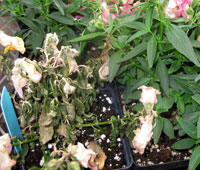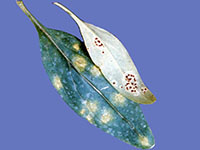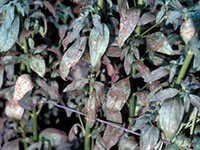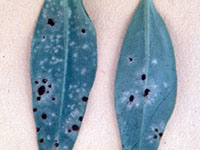Extension > Garden > Diagnose a problem > What's wrong with my plant? > Annuals and Perennials > Snapdragon > Stunted plant
Snapdragon > Plant > Stunted plant
1 of 2
Root Rot
Pythium spp., Rhizoctonia solani, Thielaviopsis basicola
- Leaves turn yellow to tan and wilt
- Plants may be stunted
- The base of the stem may turn brown and crack
- Roots have brown to black sunken areas and lack root hairs
- The outer root tissue may be easily removed leaving behind thin, stringy root cores
- Lab test necessary to determine which pathogen is causing root rot
- More information on root rot
2 of 2
Snapdragon Rust
Puccinia antirrhini
- Yellow spots or blotches can be seen on the upper surface of infected leaves
- Raised brown pustules form on lower leaf surface primarily and grow in concentric rings with age
- Powdery reddish brown spores rub off on hands and tools
- Severely infected leaves wilt and die
- Plants can be stunted and may fail to bloom
- Disease develops during cool (below 60°F) weather
- More information on Snapdragon Rust









